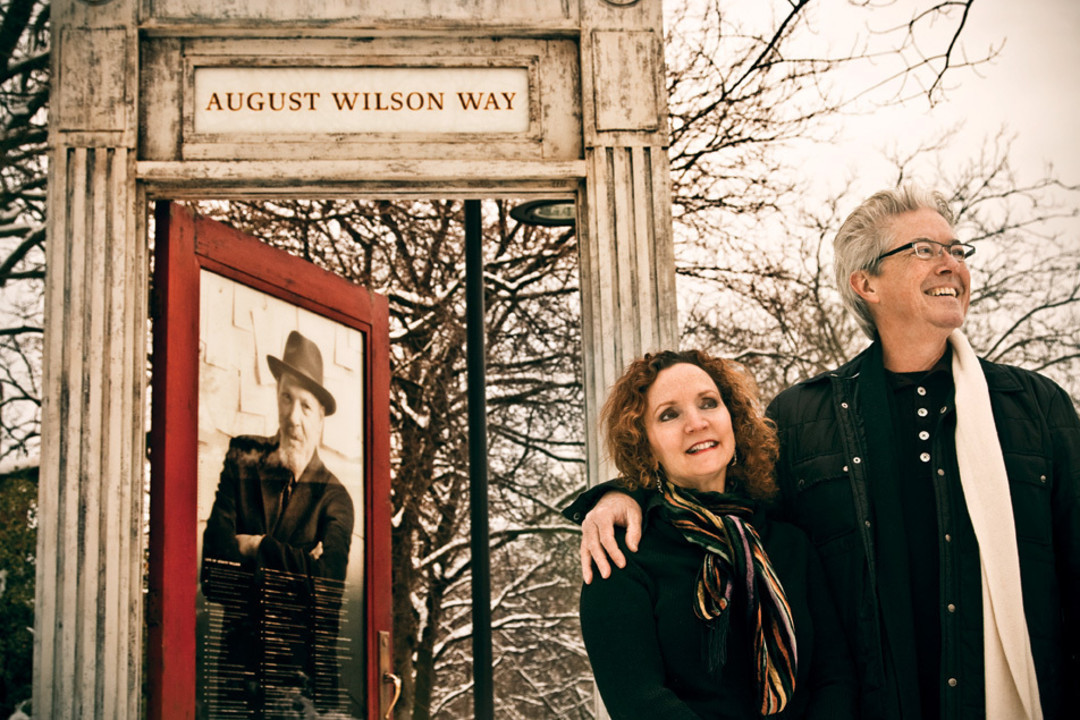Show and Tell

Wilson’s way, Camerons’ concept: Max and Mindy bring the playwright’s Pittsburgh to Seattle Center.
Image: Melissa O'Hearn
IF YOU’VE EVER WANDERED into a Kenyan village at the Woodland Park Zoo, soared among the stars at the Museum of Flight’s Space Gallery, tested symphony instruments at Benaroya Hall, or stepped through a 12-foot red door onto Seattle Center’s August Wilson Way, you’ve entered Lehrman Cameron World. Mindy Lehrman Cameron and Max Cameron, the wife-and-husband team heading Lehr-man Cameron Studio, are nationally acclaimed practitioners of exhibit design—a discipline that has roots in many ancient arts but only came into its own about 20 years ago.
Before that, exhibits were generally delegated to industrial designers and architects—and, as Max Cameron puts it, “museums were great sleepy places where curators ruled, and it was mostly words on the walls.” Cameron himself emerged from that text-based museum tradition. He was an English major who’d dabbled in acting and stage design, taken a master’s degree in museum management, and entered the field just as it opened up to new ways of telling stories and setting scenes.
Mindy Lehrman Cameron, with an art degree and MIT master’s in architecture, brings complementary visual skills to what she calls a “left brain–right brain profession, both literal and poetic.” She broke into the exhibit trade in the 1980s designing a “Temple of Trash” for a Connecticut recycling agency. In 1995, nine years after they met in San Francisco and began raising a family, and seven after she launched her own studio, they moved to Seattle. Two years later, Max joined the firm.
The Camerons also bring complementary temperaments to the effort—styles as different as the effusive Hillary Clinton and unflappable Barack Obama. Lead designer Mindy, who looks like Andy Warhol’s thick-maned star Viva, is passionate, high-strung, and opinionated. Max, a tall, gray-haired Texas transplant (“He looks like God,” she jokes) is the cool, discerning lead planner.
Together they draw on a nearly endless range of media and materials: text, sound, lighting, film, murals, photography, signage, sculpture, artifacts, tactile objects—whatever it takes to get the message across. Their studio, an old loft tucked behind artists’ storefronts in Fremont, is packed to the rafters with storyboards, CAD drawings, works-in-progress, and scale models of past projects; climbing the steep stairs is like stepping backstage at many shows at once. Large, curved foam-core shapes that might be icebergs or snowdrifts are actually model walls for the University of Alaska Museum of the North. A jewel box filled with orchestral instruments and a stage became the Soundbridge at the Seattle Symphony’s Benaroya Hall; visitors there can play the cello and timpani and, by clicking companion electronic displays, view the shape of a sound wave, the history of music, the lives of composers.
Such technology is expensive and hard to kid-proof, so the Camerons use it sparingly. Understand visitors’ psychology, explains Mindy, and you can snare them with low-tech means; just “let the experience rather than the labels tell the story.” On that score, the monumental August Wilson door behind the Seattle Repertory Theater, unveiled in November, is especially gratifying. Little could be lower tech than a doorway—nor more evocative of the world that Wilson, Seattle’s late great playwright, captured in his life’s work, the 10-play Century Cycle. When the promenade behind the door is finished, cobblestones, street signs, and light posts will re-create Wilson’s native Pittsburgh. Tiles inscribed with dialog will lead visitors into his work—as the giant door already does. It is an iconic object from his Gem of the Ocean, the door to the house of the 366-year-old “soul cleanser” Aunt Ester, its transom inscribed with a message from Wilson’s King Hedley II that also expresses the Camerons’ intent: “The people need to know the story. See how they fit into it. See what part they play.”
The door’s glass contains Wilson’s pensive image and a chronology of his life. Some visitors try its enormous brass handle. Others stoop to inspect the bronze mail slot whose inscription, “STORIES,” invites them to submit their own. In Lehrman Cameron hands, “exhibition” becomes, literally, a two-way street.




